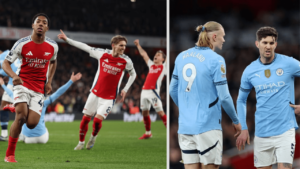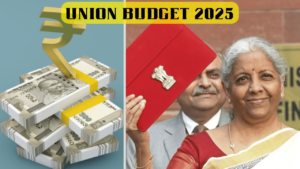On June 23, 2024, the Indian Space Research Organisation (ISRO) marked a significant achievement with the successful completion of the third landing experiment of its Reusable Launch Vehicle (RLV) named ‘Pushpak’.

The mission, RLV LEX-03, represents a pivotal step forward in ISRO’s efforts to develop reusable space technology. Conducted at the Aeronautical Test Range (ATR) in Chitradurga, Karnataka, this experiment showcased the advanced autonomous capabilities and robust technology that Pushpak embodies.
Understanding the Mission’s Objectives
The primary goal of the RLV LEX-03 mission was to replicate the high-speed landing conditions and approach interfaces characteristic of a vehicle re-entering from space. By doing so, ISRO aimed to validate critical technologies required for future Reusable Launch Vehicles.
The successful execution of this mission underscores ISRO’s proficiency in developing sophisticated guidance algorithms that address both longitudinal and lateral plane error corrections. These advancements are crucial for future Orbital Re-entry Missions, paving the way for ISRO’s ambitious plans in reusable space technology.
Technical Highlights of Pushpak’s Landing Experiment
The RLV LEX-03 mission is built upon the successes of its predecessors, RLV LEX-01 and LEX-02, which demonstrated the autonomous landing capabilities of the RLV under progressively challenging conditions. For this mission, the winged vehicle Pushpak was released from an Indian Air Force Chinook Helicopter at an altitude of 4.5 kilometers. The vehicle autonomously executed precise cross-range correction maneuvers from its release point, ensuring an accurate approach and landing at the runway centerline.
One of the notable aspects of Pushpak’s design is its low lift-to-drag ratio aerodynamic configuration, which necessitated a landing speed exceeding 320 km/h. This velocity is notably higher than that of commercial and typical fighter aircraft, which land at speeds of 260 km/h and 280 km/h, respectively. Upon touchdown, Pushpak’s speed was initially reduced to around 100 km/h using a brake parachute, followed by the deployment of landing gear brakes to achieve further deceleration.
During the ground roll phase, Pushpak maintained stability and precision using its rudder and nose wheel steering system. The mission also incorporated multisensor fusion, utilizing an array of sensors including an Inertial sensor, Radar altimeter, Flush air data system, Pseudolite system, and NavIC. This integration ensured accurate and reliable data for the vehicle’s autonomous operations.
The Significance of Reusability
The concept of reusability in space technology is transformative, promising to reduce costs and increase the frequency of space missions. The RLV LEX-03 mission is a testament to ISRO’s capability to design and execute reusable flight systems. The winged body and flight systems used in LEX-03 were reused from the LEX-02 mission without any modifications, highlighting the robustness and reliability of ISRO’s design.
ISRO Chairman S Somanath congratulated the dedicated team behind Pushpak’s success, emphasizing the significance of sustaining such complex missions. The achievement is not just a milestone for ISRO but also a significant leap for India in the realm of space exploration.

Collaboration and Team Effort
The success of the RLV LEX-03 mission is a result of extensive collaboration across various ISRO centers and Indian institutions. Spearheaded by the Vikram Sarabhai Space Centre (VSSC), the mission involved contributions from the Space Applications Centre (SAC), ISRO Telemetry, Tracking and Command Network (ISTRAC), Satish Dhawan Space Centre (SDSC-SHAR), and several other organizations.
Additionally, the Indian Air Force (IAF), Aeronautical Development Establishment (ADE), Aerial Delivery Research and Development Establishment (ADRDE), and the Regional Centre for Military Airworthiness (RCMA) played crucial roles in supporting the mission.
Key industrial partners, including the Indian Oil Corporation of India and the Airport Authority of India, also provided significant support, demonstrating a robust model of collaboration between government agencies and private industry. S Unnikrishnan Nair, Director of VSSC, highlighted that the consistent success of these missions bolsters ISRO’s confidence in the critical technologies necessary for future orbital re-entry missions.
Future Prospects: Orbital Reusable Vehicles
With the successful completion of the RLV LEX-03 mission, ISRO is now poised to embark on the next phase of its reusable vehicle program: the development of the Orbital Reusable Vehicle (RLV-ORV). This ambitious project aims to build on the technologies validated through the LEX missions, enabling vehicles to re-enter Earth’s atmosphere and land autonomously after completing orbital missions.
The future of space exploration is undoubtedly exciting, with reusable launch vehicles playing a pivotal role in making space more accessible and sustainable. ISRO’s dedication to innovation and excellence continues to position India as a significant player in the global space arena.
Summary
The success of the RLV LEX-03 mission, Pushpak, marks a major milestone for ISRO and India’s space exploration capabilities. This mission not only validated critical technologies for reusable launch vehicles but also demonstrated ISRO’s ability to execute complex missions with precision and reliability. As ISRO moves forward with its plans for orbital reusable vehicles, the achievements of Pushpak will serve as a strong foundation for future advancements.
By continually pushing the boundaries of space technology, ISRO is not only advancing India’s capabilities but also contributing to the global efforts towards more sustainable and cost-effective space exploration. The collaborative efforts, innovative technologies, and relentless dedication of the ISRO team ensure that India remains at the forefront of space innovation.
Read Next:

The Psychology of Love: Why Valentines Day Matters More Epic Than You Think
Discover the psychology of love and why Valentines Day is more important than you think. Learn how love impacts the brain, strengthens relationships, and boosts

Premier League Highlights: Arsenal Humiliate Man City 5-1, Spurs and Palace Secure Crucial Wins
Arsenal demolished Manchester City 5-1 in a statement premier league highlights win, reigniting their title hopes. Meanwhile, Crystal Palace stunned Man United 2-0, and Tottenham

How Budget 2025 Impacts the Indian Middle-Class: Major Tax Benefits and Glaring Omissions
Budget 2025 offers major tax relief to the middle class, including zero tax on incomes up to ₹12 lakh. However, it misses out on incentives

Degrees vs Employability: Why “Highly Qualified Degree Holders” Struggle to Find Jobs While “Less Qualified Individuals” Get Hired Faster!
Many highly qualified individuals struggle to secure jobs, while less qualified candidates get hired quickly. This Degrees vs Employability paradox is caused by employer preferences,

The Power of Mindset: Why Looking Poor Doesn’t Make You Poor, but Thinking Poor Does!
Discover why looking poor doesn’t define your wealth but thinking poor does. Learn the power of mindset and how a growth-oriented mindset can lead to

Overthinking: How It’s Damaging Today’s Youth – Causes and Cure in 2025
Understanding how overthinking is silently damaging today’s youth, from its causes rooted in societal pressure and social media to its long-term effects on mental health.
